
Grading in an Online Course
- Subject:
- Education
- Material Type:
- Activity/Lab
- Reading
- Provider:
- AEA Learning Online
- Provider Set:
- OLLIE
- Author:
- Evan Abbey
- Date Added:
- 01/13/2021

Grading in an Online Course

Model language is to be included in all purchase orders, bid specifications, and contracts related to digital materials, including commerical as well as OER
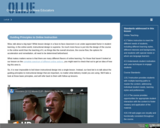
Guiding Principles to Online Instruction
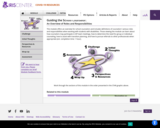
This Module offers an overview for school counselors and includes definitions of counselors' various roles and responsibilities when working with students with disabilities. Those viewing the module can learn about how counselors may participate in IEP team meetings, how to determine the need for group or individual counseling, how to assist with transition planning, and how to pursue referrals to other professionals when appropriate (est. completion time: 1 hour).
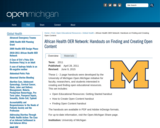
These 1 - 2 page handouts were developed by the University of Michigan Open Michigan initiative for faculty, researchers, and students interested in creating and finding open educational resources. This set includes:Open Educational Resources: Getting Started handoutHow to Create Open Content handoutFinding Open Content handoutThe handouts are available in PDF and Adobe InDesign formats.For up-to-date information, visit the Open Michigan Share page.
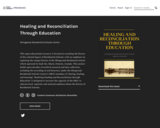
This open educational resource is focused on teaching the history of the colonial legacy of Residential Schools, with an emphasis on exploring the unique history of the Shingwauk Residential School which operated in Sault Ste. Marie, Ontario, Canada. This project builds upon decades of archival research and data collection, including the recording of oral histories, under the Shingwauk Residential Schools Centre’s (SRSC) mandate of ‘sharing, healing, and learning.’ ‘Realizing Healing and Reconciliation through Education’ is designed to increase the capacity of the SRSC to educate local, regional, and national audience about the history of Residential Schools.
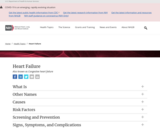
This NIH-sponsored web link provides an excellent overview of heart failure and its causes, symptoms, diagnosis and treatment.
It includes a comprehensive glossary of terms.
An illustration of a male person demonstrates the signs of heart failure such as edema and pulmonary congestion.
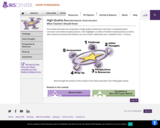
This Module describes the components of high-quality mathematics instruction: a standards-based curriculum and evidence-based practices. It also highlights a number of evidence-based practices as well as other classroom practices that teachers can use to teach mathematics (est. completion time: 1.5 hours).
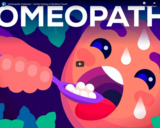
What are the principles behind Homeopathy and does it work? The video "Homeopathy Explained - Gentle Healing or Reckless Fraud?" is a resource included in the Consumer health topic made available from the Kurzgesagt open educational resource series.
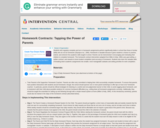
Students who regularly complete and turn in homework assignments perform significantly better in school than those of similar ability who do not do homework (Olympia et al., 1994). Homework is valuable because it gives students a chance to practice, extend, and entrench the academic skills taught in school. Parents can be instrumental in encouraging and motivating their children to complete homework. This homework contract intervention (adapted from Miller & Kelly, 1994) uses goal-setting, a written contract, and rewards to boost student completion (and accuracy) of homework. Students also learn the valuable skills of breaking down academic assignments into smaller, more manageable subtasks and setting priorities for work completion.
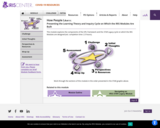
This Module explores the components of the HPL framework and the STAR Legacy cycle on which the IRIS modules are designed (est. completion time: 2.5 hours).

Brief video describing where and how to find Open Educational Resources, including specific repositories and licences to look for.
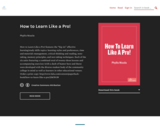
How to Learn Like a Pro! features the “big six” effective learning/study skills topics:
- Learning styles and preferences
- Time and materials management
- Critical thinking and reading
- Note-taking
- Memory principles and techniques
- Test-taking
Each of the six units featuring a total of twenty-three lessons and accompanying exercises (with a dash of humor here and there) were developed with the diverse student body of the community college in mind as well as learners in other educational venues.

Students measure and analyze forces that act on vehicles pulling heavy objects while moving at a constant speed on a frictional surface. They study how the cars interact with their environments through forces, and discover which parameters in the design of the cars and environments could be altered to improve vehicles' pulling power. This LEGO® MINDSTORMS® based activity is geared towards, but not limited to, physics students.
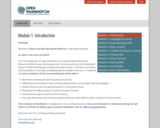
This course walks you through techniques to incorporate Open Educational Resources (OER) into your teaching practice. The course will cover the fundamental aspects of OER including open licensing and public domain. It focuses on providing practical guidance in locating and applying openly available resources. It is expected that upon completion of this course participants will be able to:
Describe the meaning of open educational resources.
Differentiate the concepts of open licensing, public domain, and all rights reserved copyrights.
Identify resources that are openly licensed or in the public domain.
Distinguish the different types of Creative Commons licenses.
License works using a Creative Commons license.
Find open educational resources and properly attribute a work offered under a Creative Commons license.
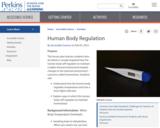
This activity was designed for blind learners, but all types of learners can use it to learn how the body self-regulates. This lesson plan teaches students how the human body self-regulates to maintain a stable internal environment despite changes in the external environment -- a process called homeostasis. Most of the activities detailed in this lesson plan can be done with visually impaired students if teachers adapt them using Resources for Teaching and Adapting Lessons for Students with Visual Impairments.
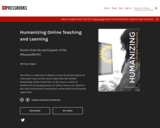
Humanizing Online Teaching and Learning is a collection of chapters written by the participants of a free open course on the Canvas Open Network. A variety of methods for increasing presence in online courses were shared in this multi-institutional, international, online professional learning opportunity. Susan Spellman Cann along with Erin Luong, Christina Hendricks, and Verena Roberts happily contributed to chapter six, which focuses on social learning in online spaces. There is a special focus on the importance of relationships which are essential in any learning, but especially online.

This volume provides readers with methods, case stories, and strategies related to Hybrid-Flexible (HyFlex) course design so that they may make decisions about using it themselves and even begin their own HyFlex course (re)design.
More specifically, based on the needs identified for their course(s), readers will be able to a) determine if and how HyFlex course design could help them solve critical needs, b) take advantage of emerging opportunities to improve their education practice, enabling them to better serve more students, c) gain an awareness of the HyFlex design, d) find their own innovative HyFlex solution to their specific challenges, and e) begin the HyFlex implementation process using strategies similar to those used by instructors described in this book.
The volume describes the fundamental principles of HyFlex design, explains a process for design and development, and discusses implementation factors that instructors have experienced in various higher education institutions. These factors include the drivers, the variations in implementation approaches and constraints, and the results (e.g., student scores, student satisfaction). A series of worksheets provides specific guidance that can be used by individuals or teams engaging in HyFlex design projects at their own institution. Case reports from institutions and faculty who have successfully implemented HyFlex-style courses provide a rich set of real-world stories to draw insights for a reader’s own design setting.

Checklist of best practices for creating accessible resources.The Accessibility Checklist is adapted from BC Open Textbook Accessibility Toolkit, CC-BY 4.0 International License.

ISKME's OER Commons Teacher Training Initiative offers teachers a collaborative professional development model centered on engagement with Open Educational Resources (OER). The OER Commons Teacher Training Initiative is rooted in the idea that equitable access to high-quality education is a global imperative. Open Educational Resources, or OER, offer opportunities for systemic change in teaching and learning through accessible content, and importantly, through embedding participatory processes and effective technologies to engage with learning for all.